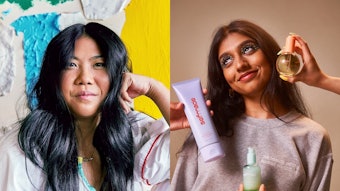Many skin conditions are associated with or due to an enhanced level of interleukin-1 (IL-1) and/or prostaglandin E2 (PGE2). Skin barrier disruption by detergents, dry skin and UV-induced skin erythema are associated with enhanced levels of both IL-1 and PGE2; aged skin is linked only to increased IL-1 and sensitive skin, only PGE2. To achieve optimal protection against skin irritation overall, the presented study aimed to develop a bifunctional anti-irritant with both IL-1 and PGE2 inhibitory activity. Of the two known IL-1 isoforms—IL-1α and IL-1β—the current work focused on IL-1α since this is the predominant form generated by keratinocytes and the first secreted in response to an irritative stimulus.
(-)-α- Bisabolol
As a candidate for IL-1α and PGE2 inhibition, (-)-α-bisabolol was chosen . It is a natural sesquiterpene alcohol from chamomile that is well-known for its anti-inflammatory properties in vivo. (-)-α-Bisabolol significantly inhibited 5-lipoxygenase and cyclooxygenase-1 in human blood cells. However, results from blood cells cannot directly be transferred to skin cells because human keratinocytes do not express 5-lipoxygenase. Since no apparent data was available describing cytokine inhibition by (-)-α-bisabolol in human skin or human skin cells, IL-1α and PGE2 inhibition on human keratinocytes was investigated.
In order to determine the IL-1α inhibitory activity, the immortalized human keratinocyte cell line HaCaT was seeded into a 96-well microplate and cultured in Dulbecco's Modified Eagle Medium (DMEM) to 90–100% confluency. The medium was then changed to medium without (control) and with the test compounds and the cells were incubated for 1 h. Then, IL-1α biosynthesis was stimulated by addition of 0.4 µM calcium ionophore A23187. After a further 6 h, the cells were lysed and the IL-1α content was measured with a human IL-1α ELISA kita.










